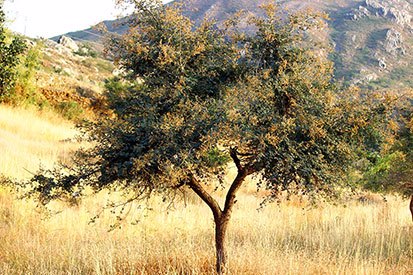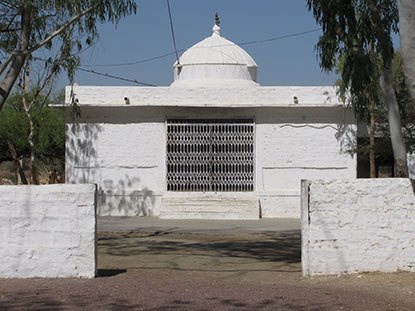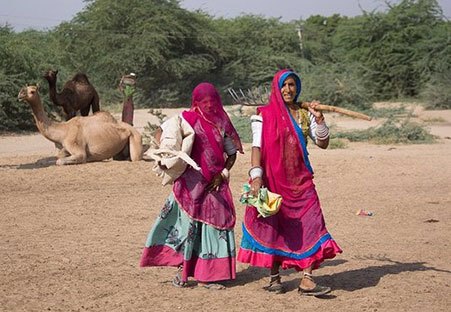|
|
|
|
Rendezvous with The Bishnois – The Guardians of Nature |
|
Read. Imagine. Travel.
.
In the afternoon of November, when the fiery desert sun began to mellow, our driver Paramjeet veered the car, and we plunged into a bumpy dirt track through the fields amidst the harsh and unforgiving Thar Desert. Our car stopped at a clearing and switched off at a place tucked away from the Jodhpur city's hustle-bustle. We could hear the only sound that was the whisper of the leaves, and brooding trees, which stood amidst sandy barrenness, where we met our guide Sanjay. Sanjay, our guide saw our curious eyes wanting to know what these trees were, and suddenly Sanjay said, "These are the Khejri trees. I sure will talk about these with you but a bit later." While we were still trying to understand how he knew what we wanted to know, suddenly, we were accompanied by a group of four gazelles, followed by a large pack of blackbucks. I knew from my past experiences, the moment I would take out my long-focus lens to capture the beauty, the herd would just simply disappear. Sanjay again sensed my hesitation, and he smiled. He proudly said, "Don't worry, these herds roam fearlessly here and will not think that you are pointing a gun at them. You are in the land of the Bishnois.
|
|
The two most important principles were the ban on cutting trees and safeguarding the wildlife around them. And to this day, a Bishnoi strictly adheres to these principles until death.
The next morning we drove for about 12 km to reach the Khejarli village. Khejarli village is considered the holiest sanctuary of the Bishnoi community. There is another heart-melting story about the valor of the Bishnoi tribe. It is said that around 363 Bishnoi people, including men, women, and children, sacrificed their lives protecting the khejri trees, which I was still wondering about. It is said that they clinged to the trees to protest against the king's men who had come to cut down these trees to be used as fuel for the cement lime kilns that were to be used for building the king's palace. The sacrifice that these people made is remembered here in Khejarli, where all the martyrs were cremated. Today, a large mausoleum stands tall beside a Khejri tree named after the first martyr, Amrita Taru (Amrita Tree). There is a temple of Guru Jambeshwar that stands guard over it. 
My curiosity overcame, and I asked Sanjay the importance of the khejri tree and why someone would lay down their lives to protect it. He said, "Khejri is a tree worth dying for. Khejri is the most environmentally friendly tree in the desert of Rajasthan. Even during the most scorching summers here, the tree still remains green. When the mercury sails beyond 45 degrees celsius, Khejri tree gives a wonderful shade for the crops.." He further added, "It is still a customary practice for us to buy khejri saplings from this village and plant them in our homes. We water these saplings for almost two years, and after that, the tree can grow on its own. Khejri wood makes excellent furniture, but a Bishnoi artisan would never cut a living tree. He will just wait for the trees to die naturally.
The next day, we took a rather early excursion to another place, 25 kms from Jodhpur, to admire the temple of the Bishnois. It was again a journey through the Thar Desert where asphalt track was sprinkled with the golden sand. I was told that a small religious ceremony was to be held here early in the morning. The dry winds were cutting through the air, and the chills were palpable the moment we got out of the car. It was 07:30 hrs, and already the holy fire ceremony or the Havan commenced inside the temple. The entire thing looked surreal. We visited many temples during our Rajasthan trip, but this temple's whole ambience was so pure and rustic. The head priest was chanting the religious hymns, and men wearing the traditional white cloths and women dressed in the most beautiful colorful sarees were pouring Ghee (or clarified butter) into the fire as they were slowly circling the fire clockwise.
While I was still bedazzled and was trying to capture every moment of this ceremony, I heard a voice, "This purifies the air and clears the way to our Guru (the spiritual teacher)." I turned back and saw the head priest.He explained as he took me towards the back of the temple after the ceremony was completed. We walked for around 300 meters and came to a ground that was wider and clearer. There were around twenty gazelles, which were strolling about, eating the grains and millets left by the villagers for them. He said, "As per one of the principals laid by our Guru, we are sharing 10% of our food grains with the wildlife around us. We follow this principle strictly to preserve nature's balance.
I was completely amazed by the love of this community for nature. I was still dreaming about the perfect land where we live happily with our surroundings without destroying it when suddenly, a fawn walked right towards us. By now, I understood the love of animals with Bishnois. But what was even more impressive was the way they treated animals. These animals were like part of their family. My daydream was interrupted by the head priest who called out the fawn by her name: "Aarti."Aarti fearlessly strolled to the head priest. He, while rubbing his hands over it's head, said, "Aarti does not have a biological mother as she died when giving birth to her. A Bishnoi woman took her, breastfed her like her own newborn until the motherless fawn could be on her own." I was speechless upon hearing this heart-melting story.
Next in my itinerary was the visit to Salawas village, which is a predominantly Bishnoi village. This village looked more modern than the other Bishnoi villages that we crossed during our drive. The traditional mud houses were replaced with more modern architecture made using the Jodhpuri stone. The vibrant flashes of the women's orange and red veils were supplemented by elegant nose rings reaching to their ears and heavy necklaces and bangles. I was told all of them were made of pure gold.
Later, I was taken for the opium ceremony. Bishnoi's opium ceremony is an ancient custom, which is still popular among the village elders. The elders believe that the drug has the power to heal. In fact, fights between clans were often settled through an opium ceremony in the earlier times. The opium ceremony is an extravagant matter for village elders dressed beautifully in their white attire and turbans that are meticulously draped to their heads. The feel was reverent.
Bishnoi Villagers are truly God's gift to humankind, and the way they respect nature is a lesson to be learned and practiced for. If you ever travel in the vicinity of Jodhpur, do not miss the opportunity to meet and learn from this community. I am sure it will change your way of life, the way it changed mine.
Someone rightly said, if there is an epic Land of myriad stories it has to be India. These are the stories that have inspired millions of people for centuries. At Indo Asia Tours, the itinerary is not just a travel route or a trip. We design, conceptualise and handcraft every journey for you. Our special customised itineraries and curated experiences in different destinations are what make for those memorable travel moments. |
|
Virtual Destination Training Program |
|
|
|
Please feel free to write back to us at marketing@indoasiatours.com to share our thoughts on customized journeys covering the Indian subcontinent or take time to visit our website https://www.indoasia-tours.com. Be sure we will prepare the best program to make a memorable trip for your esteemed clients! |
|
TRADE NEWS AND UPDATES |
|
Website: www.indoasia-tours.com |
|
|


 He told me the story of a beautiful community - the Bishnois. Western Rajasthan was always hit by severe droughts that followed famine every year, and migrating to Malwa at the beginning of the summer was a thing followed by the people here for centuries. According to a legend, Jambeshwar, son of one of the local Rajput Thakur, ended the migration by making proper distribution of grain to the people of this land. In 1485, he began the Bishnoi sect and laid the twenty-nine principles ('Bish' means twenty and 'noi' means nine). He later became the first Guru (spiritual teacher) of the Bishnoi tribe.
He told me the story of a beautiful community - the Bishnois. Western Rajasthan was always hit by severe droughts that followed famine every year, and migrating to Malwa at the beginning of the summer was a thing followed by the people here for centuries. According to a legend, Jambeshwar, son of one of the local Rajput Thakur, ended the migration by making proper distribution of grain to the people of this land. In 1485, he began the Bishnoi sect and laid the twenty-nine principles ('Bish' means twenty and 'noi' means nine). He later became the first Guru (spiritual teacher) of the Bishnoi tribe. 



 Thank you, patrons, for reposing faith in our destinations and enquiring for customised virtual destination awareness training programs. We are proud to conduct them successfully so far and are looking forward to hold similar virtual destination awareness training programs for your team or yourself or a virtual tour for your clients. Let us know the destination of your interest along with your convenient date / time and we will be happy to set up a program for you.
Thank you, patrons, for reposing faith in our destinations and enquiring for customised virtual destination awareness training programs. We are proud to conduct them successfully so far and are looking forward to hold similar virtual destination awareness training programs for your team or yourself or a virtual tour for your clients. Let us know the destination of your interest along with your convenient date / time and we will be happy to set up a program for you.
